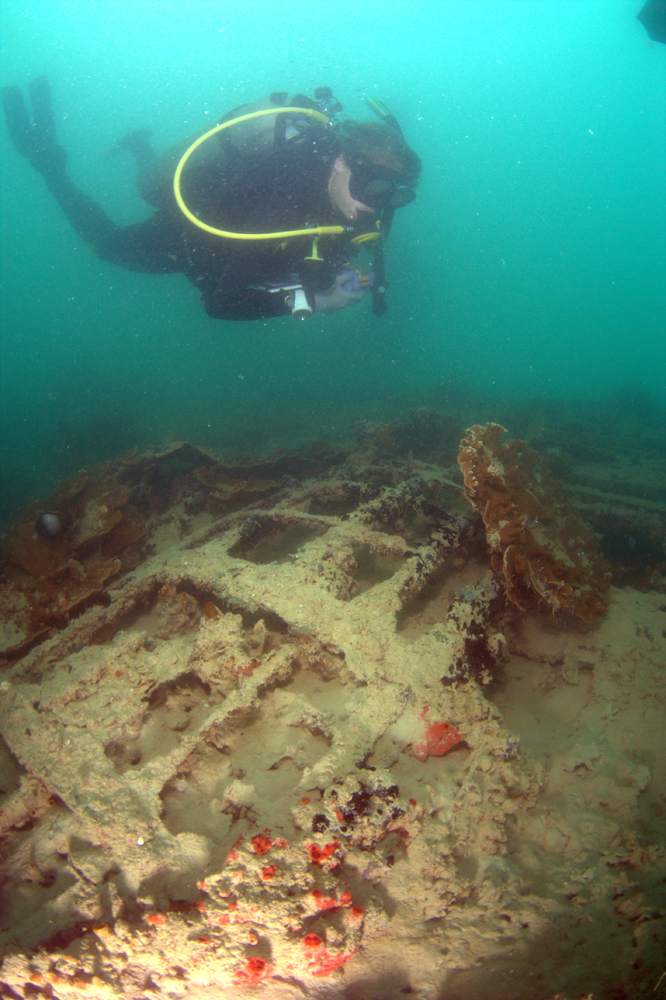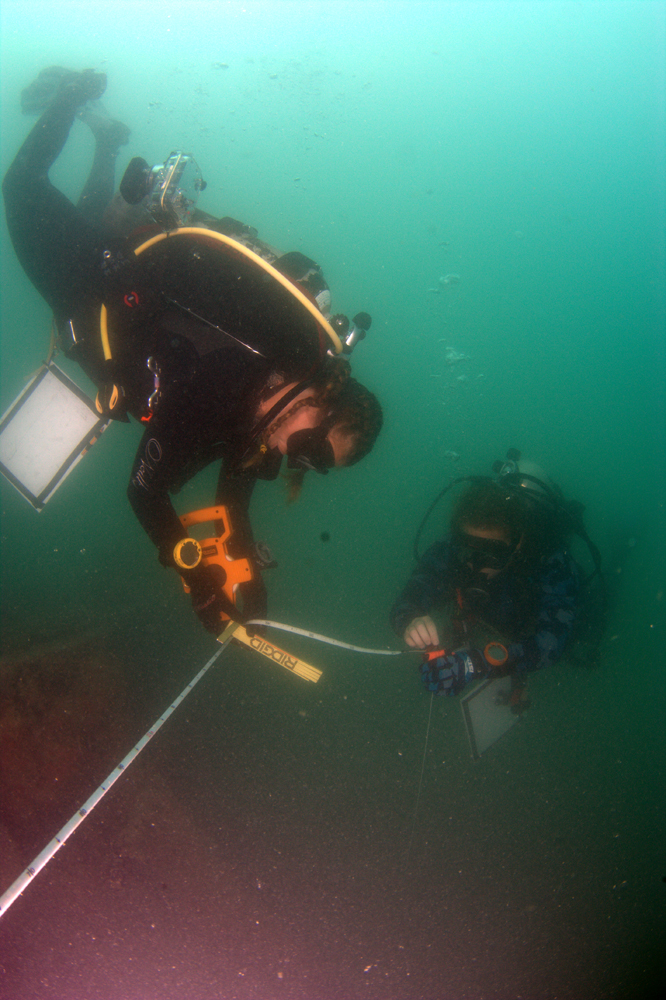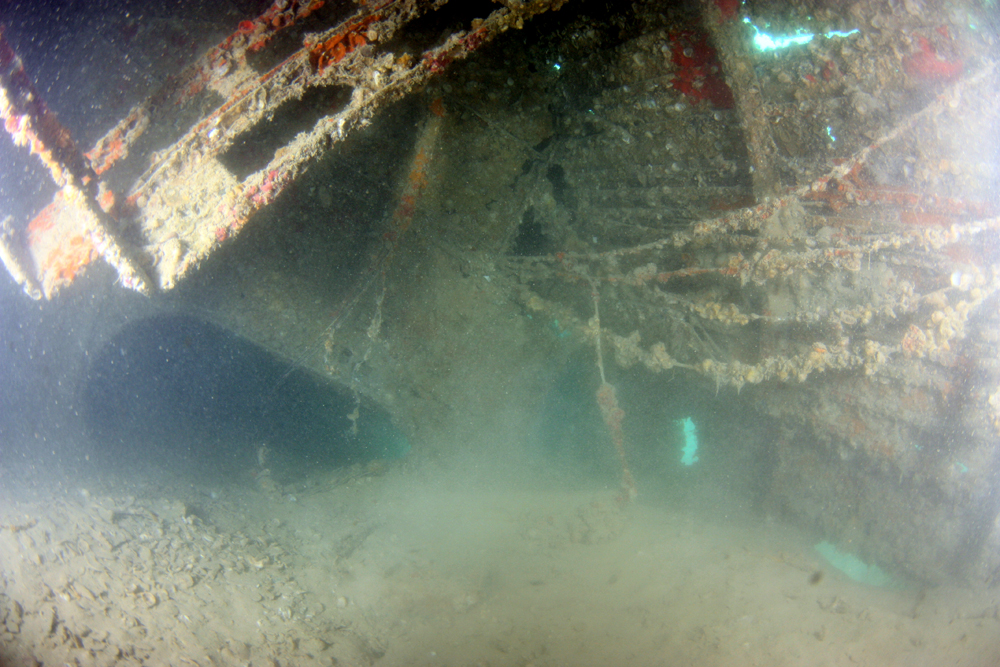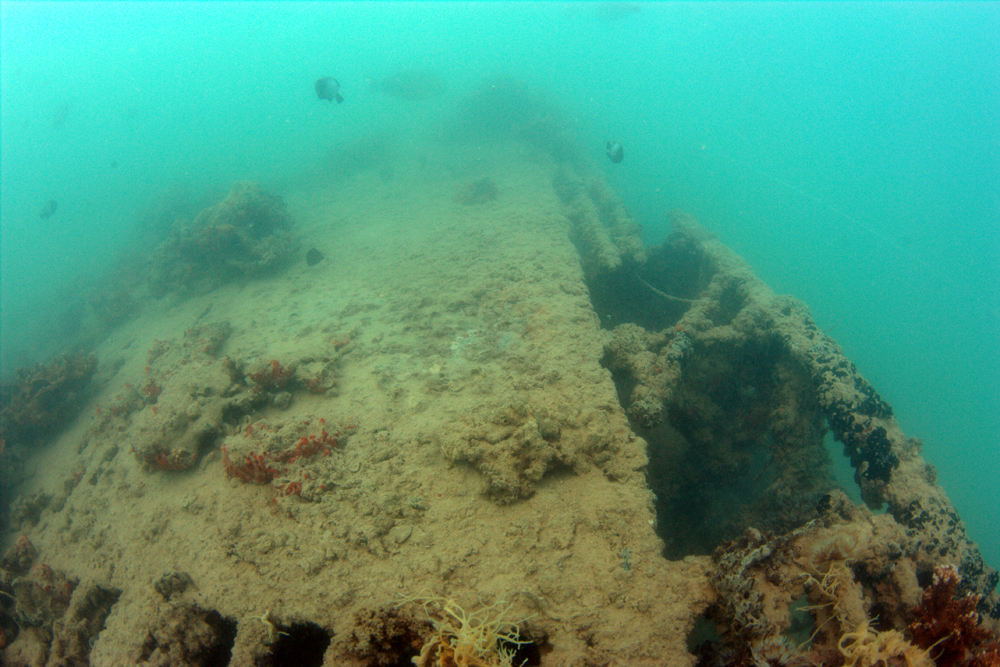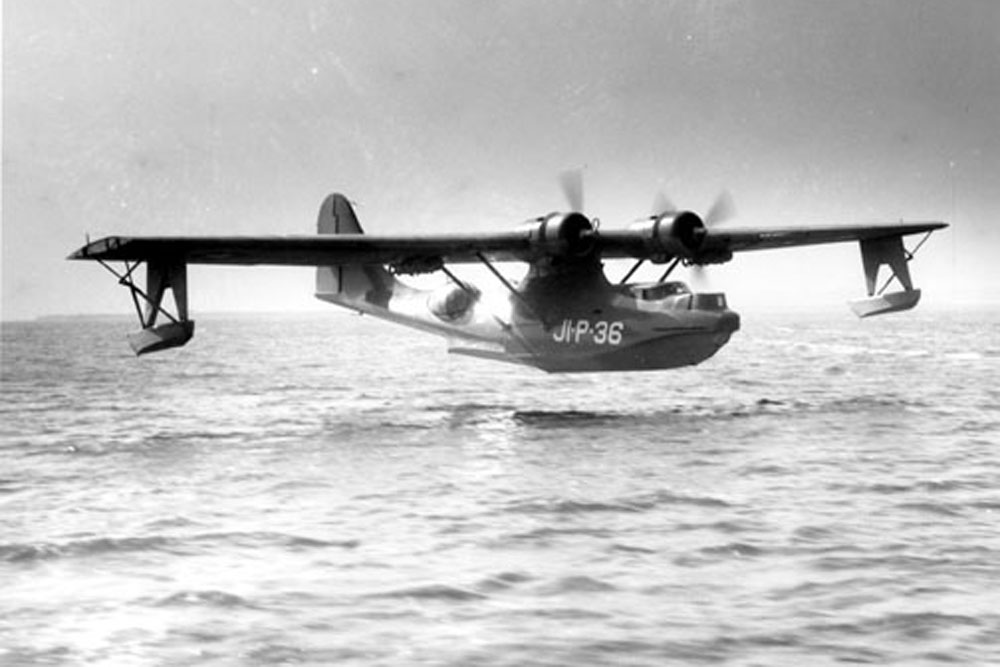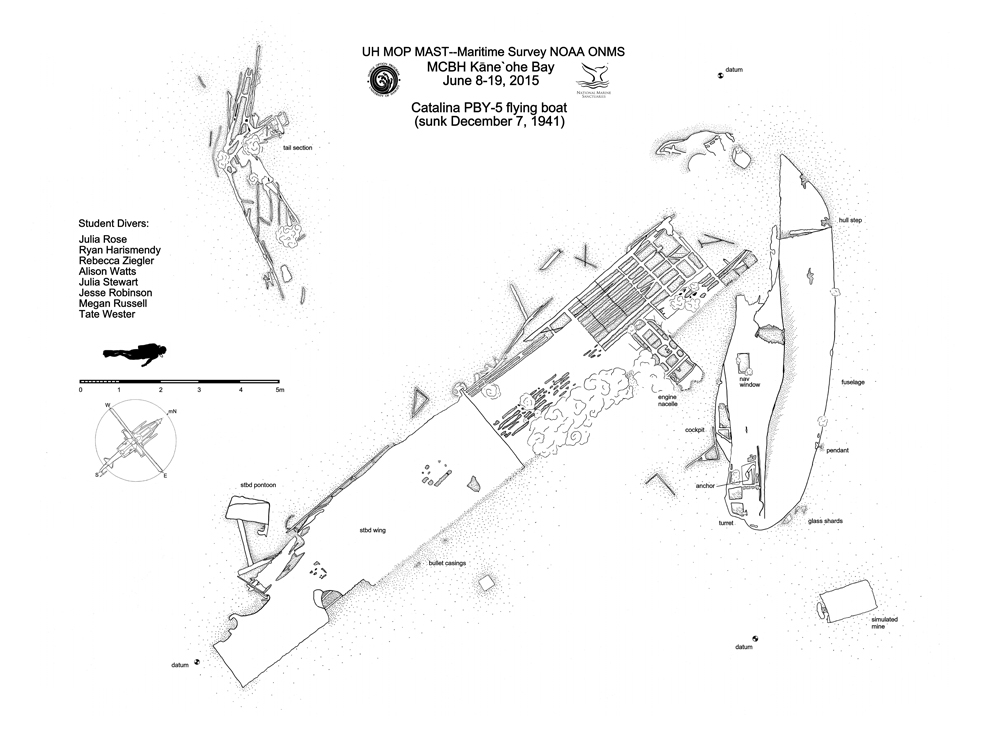Lost in Pearl Harbor: Photos of Sunken WWII-Era Navy Plane
For 74 years, the Catalina PBY-5 "flying boat" has rested at the bottom of Oahu's Kāne‛ohe Bay. The plane, a long-range bomber used by the U.S. Navy during World War II, was one of many material causalities of the Japanese attack of Pearl Harbor on Dec. 7, 1941. Until recently, archaeologists and divers had been unable to get clear photos of the wreck, but students from the University of Hawaii finally captured some haunting shots. Led by maritime archaeologist Hans Van Tilburg from the National Oceanic and Atmospheric Administration (NOAA), the students photographed the drowned plane and surveyed the surrounding area. [Read the full story about the drowned Catalina bomber]
Exploring the remains
A diver examines the gunner's forward turret on the PBY-5 Catalina, which is resting on its right side. The plane is in three pieces, about 30 feet (9 meters) below the surface of Kāne‛ohe Bay, Hawaii. (Credit: UH Marine Option Program)
Controls
The sunken plane's anchor well and cockpit (upper right). (Credit: UH Marine Option Program)
Surviving details
A close-up of the cockpit, showing the portside wheel and throttle controls (left) extending downward (to the right) from the overhead part of the cockpit. (Credit: UH Marine Option Program)
Get the world’s most fascinating discoveries delivered straight to your inbox.
Buried
This part of the plane housed the starboard engine. The plane is one of 27 Catalina PBYs that were destroyed at the Naval Air Station near Pearl Harbor in the first minutes of the Japanese attack on Oahu. (Credit: UH Marine Option Program)
Working out the details
Here, divers take measurements for the site plan. In June, University of Hawaii students surveyed the entire wreck, as well as the area surrounding the plane. (Credit: UH Marine Option Program)
Layers of time
The cloudy waters of Kāne‛ohe Bay had kept divers from taking clear photos of the wreck for decades. This somewhat murkey image shows the interior of the fuselage in the area of the mechanic's compartment. (Credit: UH Marine Option Program)
Internal supports
A tail section lies a short distance away from the starboard wingtip. (Credit: UH Marine Option Program)
Evidence of attack
Here, you can see the tear in the port hull of the plane and the break in its mid-fuselage area. It remains unknown whether the plane was destroyed while trying to take off on the morning of the Pearl Harbor attacks. (Credit: UH Marine Option Program)
A flightless wing
The upper surface of one of the plane's wings. A long-range bomber, this Catalina PBY would have come in handy in the hours after the attack on Pearl Harbor. American pilots used planes like this one to pursue the enemy after the attack, though there was no immediate counterattack against Japanese forces. (Credit: UH Marine Option Program)
Touching down
A PBY-5 Catalina plane making a landing. (Credit: USN)
Discoveries documented
The final site plan for the 2015 archaeological survey by students from the University of Hawaii shows the relative location of different parts of the wreck. (Credit: NOAA/ONMS.)
Follow Elizabeth Palermo @techEpalermo. Follow Live Science @livescience, Facebook & Google+. Original article on Live Science.





